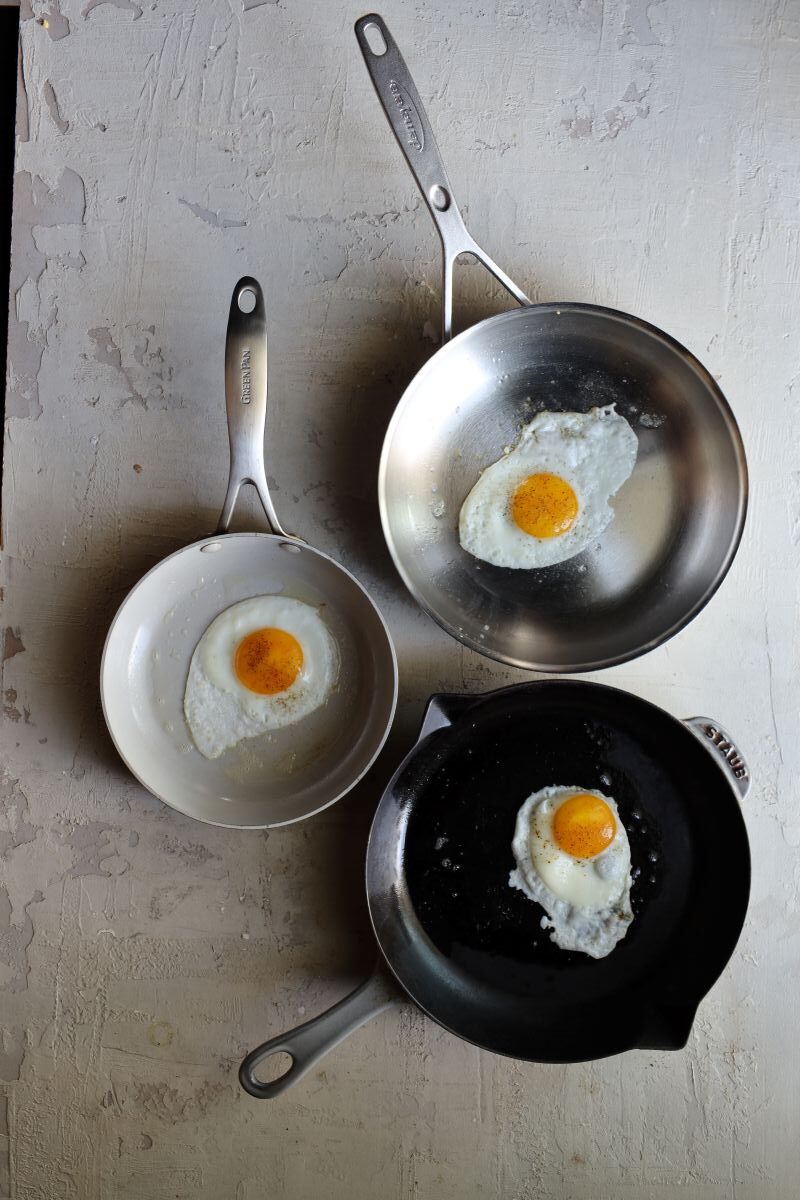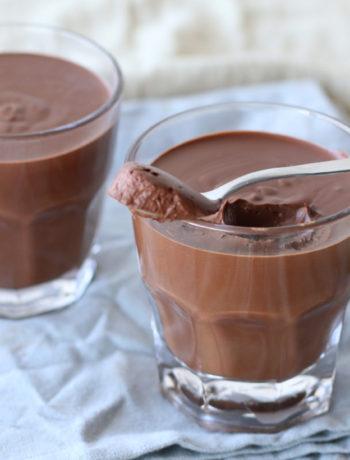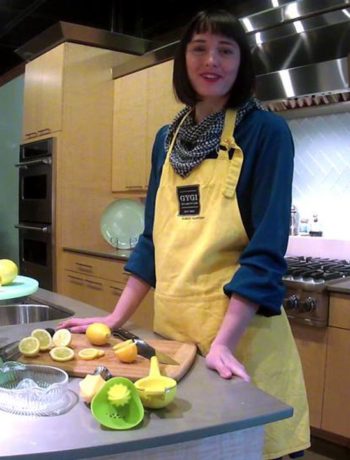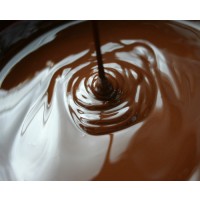We’re back in the kitchen and today we’re frying eggs. And whether you like them sunny-side-up, over-easy, or with crispy edges, your choice of fry pan or skillet will have a big impact on the cooking process and the final result. Yes, the pan you use matters! There’s a significant difference between a high-quality cast iron frying pan and a cheap aluminum frying pan—especially when it comes to cooking something as delicate as eggs.
With so many options out there, it can be intimidating to try and find the best frying pan for your kitchen and for your eggs. But don’t worry! We’ve got this! We want to walk you through the different types of pans you can use to fry eggs and the pros and cons of each.
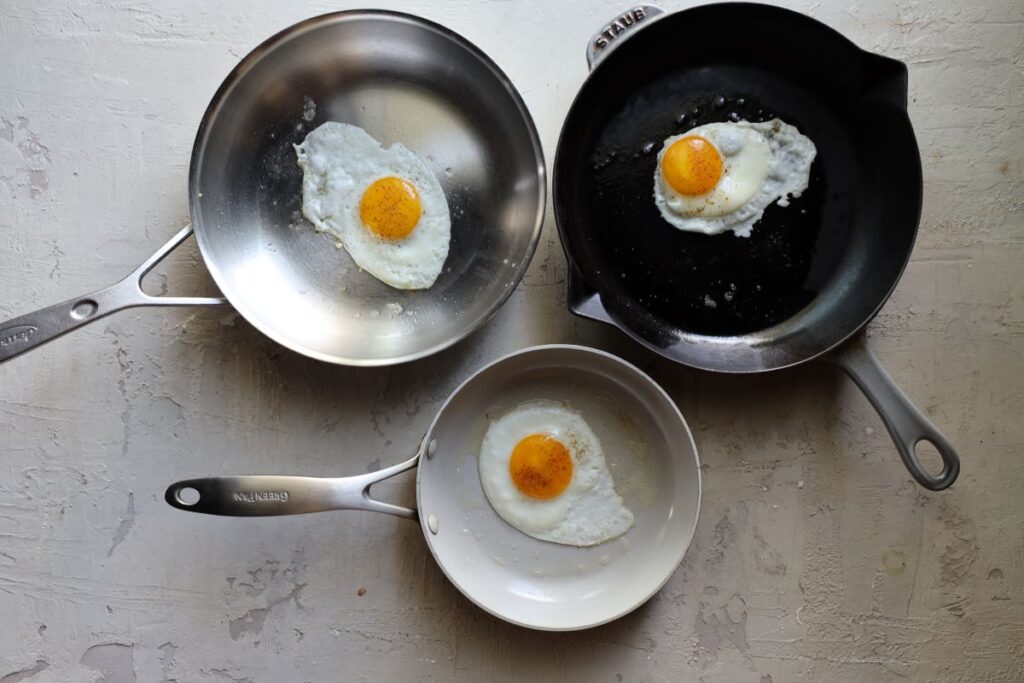
Why Choosing the Right Pan Matters
Frying an egg is simple enough, right? Well, that might not be the case if you’ve tried using the wrong pan and the wrong technique. We bet everyone has ruined one or two eggs in the frypan, and there’s absolutely nothing worse than that burned egg smell you can’t get out of the house for days. We don’t want anything to do with uneven cooking and sticking. That’s why it’s so important to make sure the heat is evenly distributed, you can control the cooking time, and the egg slides easily when done. And you can achieve all of this with minimal frustration as long as you have the right pan.
Our Favorite Frying Pans
Let’s Dive into the different types of frying pans and figure out which one is best for your eggs.
1. Ceramic-Coated Nonstick Frying Pan: The Classic Choice
2. Enameled Cast Iron Fry Pan: Crispy, Rustic Charm
3. Stainless Steel Skillet: Even Heat and Durability
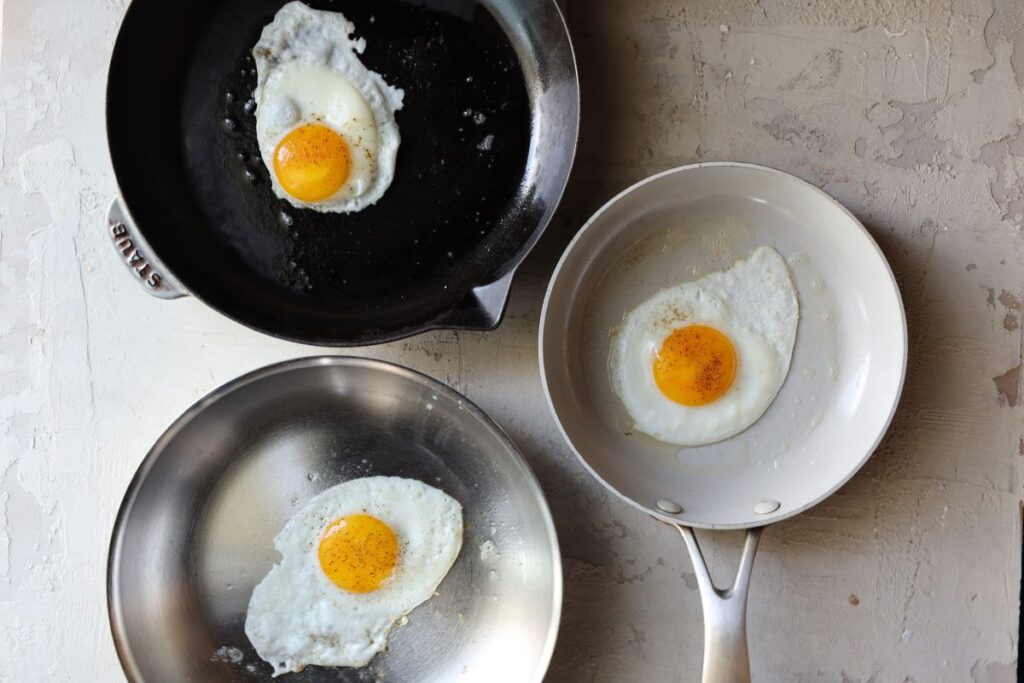
Which Pan is Right for You?
Ultimately, the best pan for frying eggs depends on your cooking style, preferences, and budget. Here’s a quick recap of these products and what they might mean for your eggs:
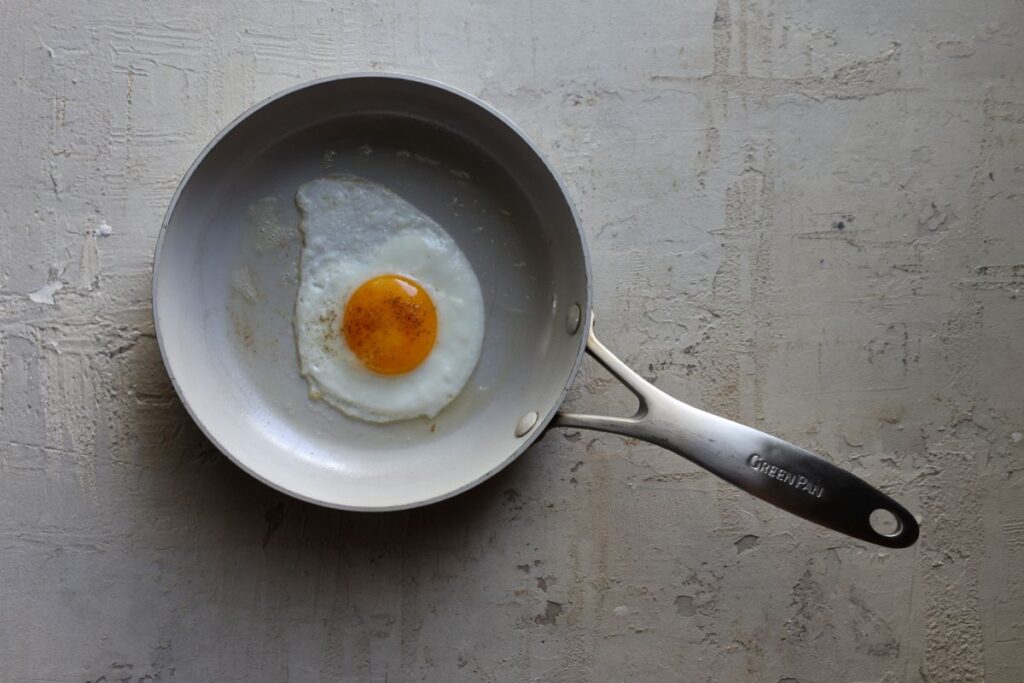
Ceramic-Coated Nonstick Frying Pan:
Ideal for easy, no-fuss fried eggs with minimal cleanup. This is the go-to in the kitchen when looking for a quick, easy egg for your breakfast or your burger. The pan heats up quickly and the egg slides right out.
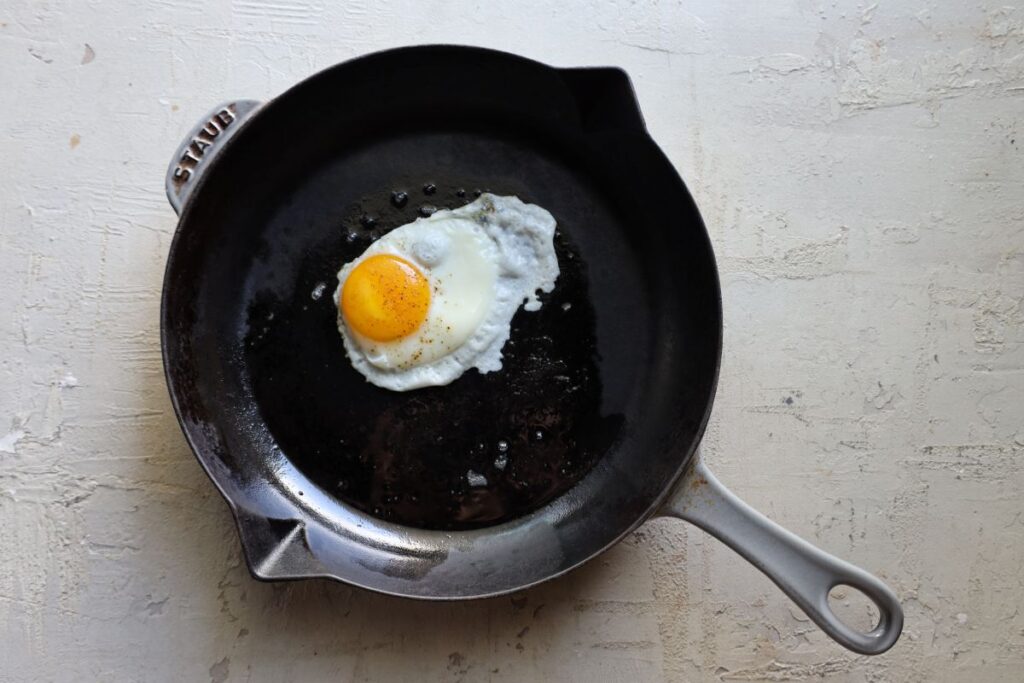
Enameled Cast Iron Fry Pan:
So you like your eggs with crispy edges? An enameled cast iron fry pan provides that rustic, timeless cooking experience. It takes a little longer to heat up, once it reaches the temperature, it will retain that heat. So if you like eggs over easy, you’d better work fast.

Stainless Steel Skillet:
Offers durability and even heat, but requires more attention to avoid sticking. It takes a little practice, but we know you can make your eggs in a stainless steel pan. We believe in you!
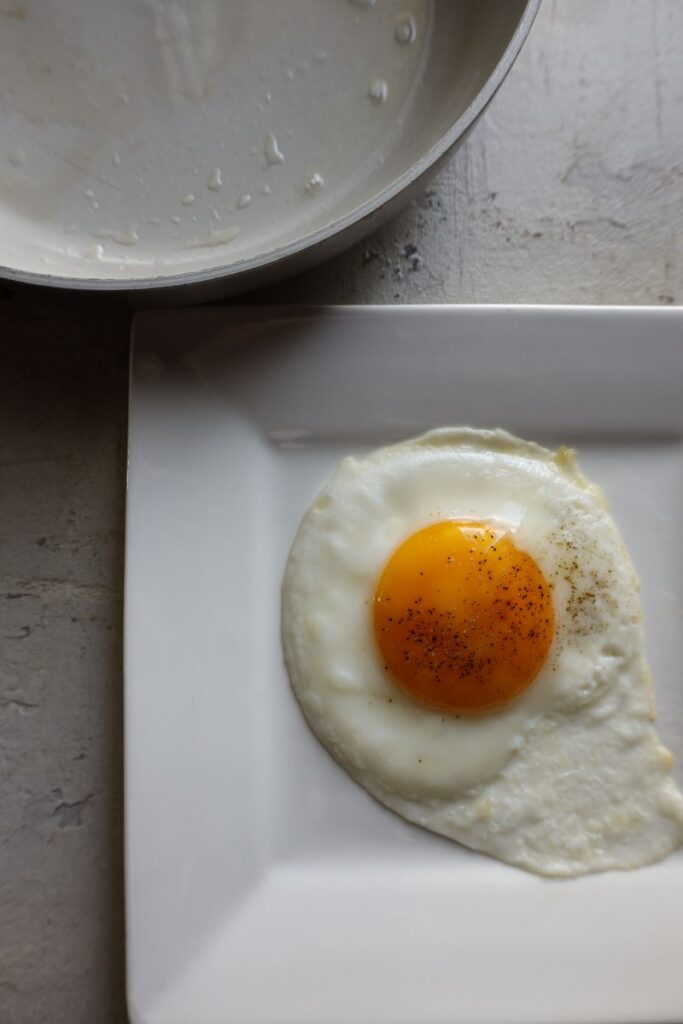

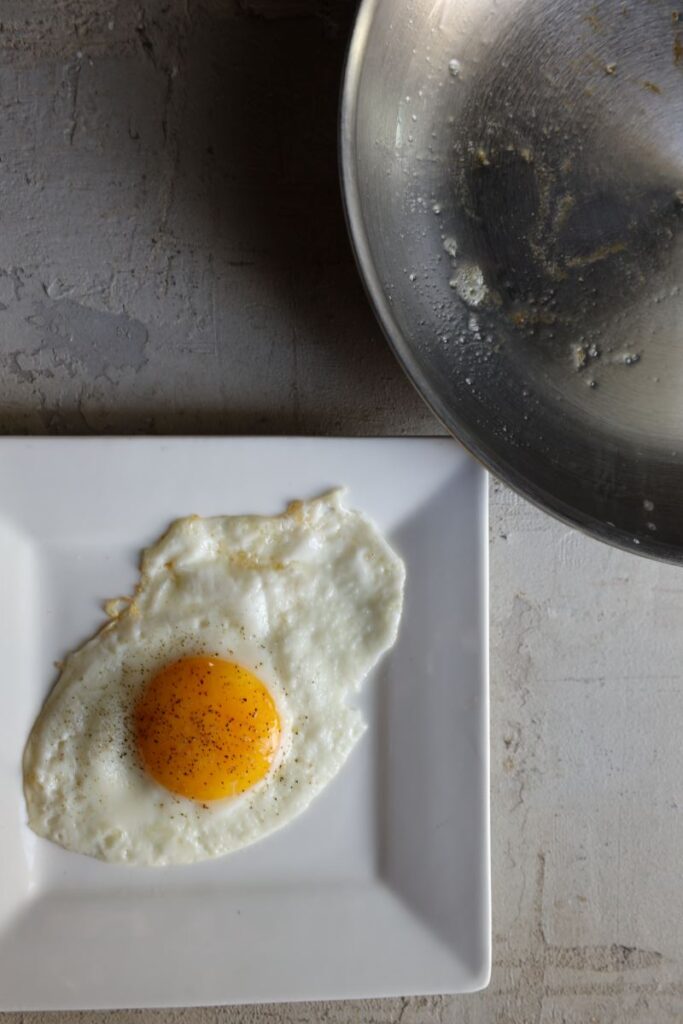
Tips for Keeping Your Frying Pans in Top Shape
All of these pans are a great option for regular use in the kitchen. Just note, if you invest in a high-quality pan, you want to make sure it stays in good shape for years to come. Here are a few of the things we recommend to prolong the life of your favorite fry pans.
- Keep them out of the dishwasher (we know it’s hard to hear that!) but handwashing allows you to control the heat and friction on the surface of your pan better than the wild and often extreme environment in your dishwasher.
- Never plunge a hot pan into cold water, because it can cause thermal shock and warp your pan.
- Always use mild detergent, and soft scrubbing tools when washing (never use a metal scrubber on the cooking surface).
- Dry your pan completely before storing it.
- Never store food in your frying pans.
- To avoid scrapes and scratches, use wood, silicone, or plastic utensils (Note: these are the only tools you can use safely for nonstick pans). If you prefer a metal tool with your cast iron or stainless steel frying pans, use it with care and do your best to not scrape the surface.
- Lastly, to protect and prevent damage to the surface of nonstick cookware, use only low and medium temperatures for all cooking. Never use high heat settings. The maximum temperature with most nonstick pans is less than 500°F.
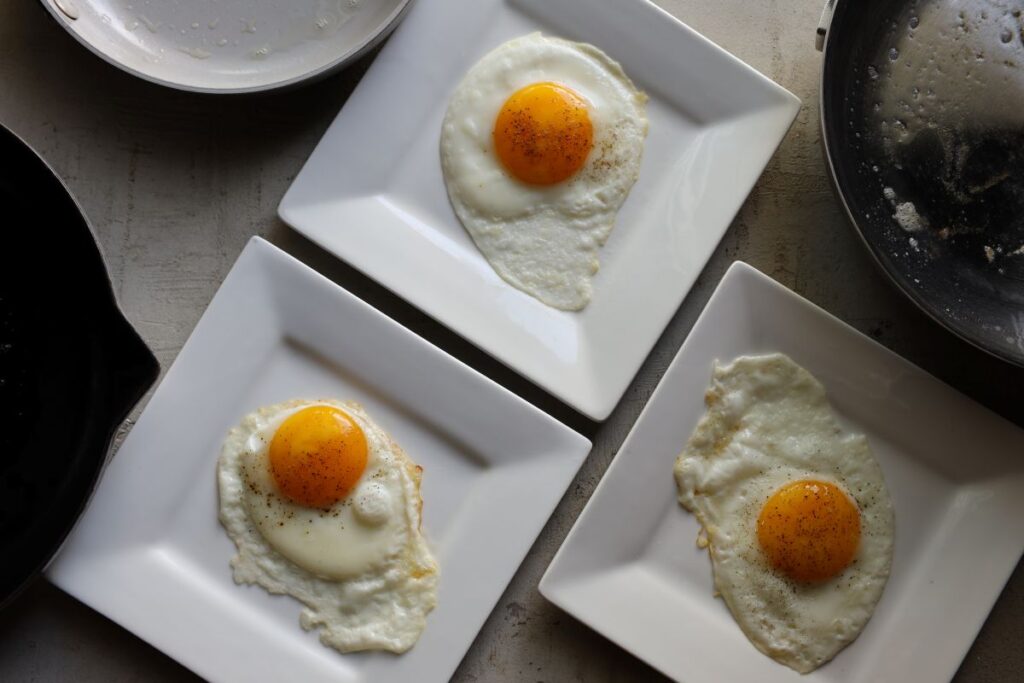
Frying the perfect egg might seem simple, but as you’ve seen, your pan plays a starring role. Whether you’re going for that smooth nonstick slide, crispy cast iron edges, or the control of stainless steel, the right pan makes all the difference in both the process and the plate. Take care of your tools, cook with confidence, and don’t be afraid to experiment until you find your perfect match. And if you’re ready to upgrade your kitchen gear or have questions about which pan is right for you, swing by Gygi—we’re always here to help you cook like a pro, one egg at a time.

